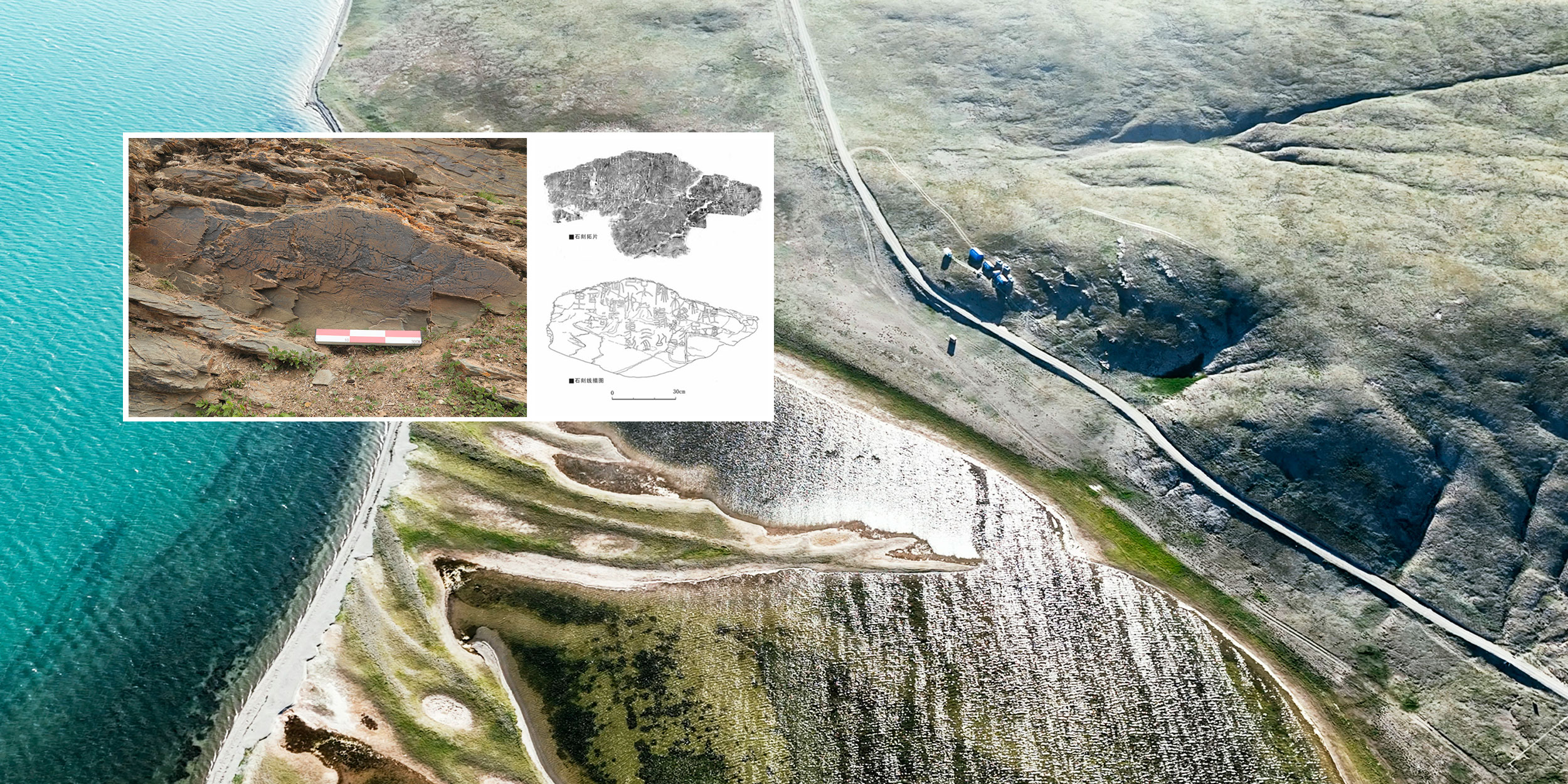
Qin Dynasty Rock Carving in Remote Qinghai Verified as Authentic
A rock carving discovered in 2020 in northwestern China’s Qinghai province has been confirmed as dating to the Qin Dynasty (221–206 BC), China’s first imperial dynasty. Experts say it is the only known Qin inscription still in its original location and the highest-altitude example found so far.
At a press conference Monday, experts said the carving bears script typical of the Qin era. The engraved stone contains a total of 12 lines with 37 characters, most of which remain legible, according to Professor Li Ling of Peking University’s Department of Chinese Language and Literature in Beijing.
The rock, made of quartz sandstone, lies in the remote Gyaring Lake region of Qinghai. Archaeologists have identified at least 75 city ruins, ritual sites, and burial sites dating back roughly 2.5 million years ago within 150 kilometers of the stone.
The 2,200-year-old carving was first identified during a 2020 expedition conducted by researchers from Qinghai Normal University. Debate around its authenticity reignited this past June among historians and archeologists after state media published an article by the Chinese Academy of Social Sciences’ Institute of Archaeology highlighting the find.
Officials from the National Cultural Heritage Administration (NCHA) said Monday the stone’s irregular wording and uneven lines had fueled doubts about its origins. Some argued the marks did not match the standardized strokes of the Qin era.
But detailed analysis of individual characters confirmed they matched known Qin-era records. According to the NCHA, field and lab analyses also showed the marks were hand-carved with ancient methods, dismissing claims that modern tools may have been used.
The agency also said no modern metals were detected, and minerals inside the engravings confirm it is 2200 years old. While the rock’s location shielded it from erosion, the engraved surface showed weathering consistent with its antiquity.
“Definitive conclusions require solid scientific evidence,” said Deng Chao, director general of the Department of Cultural Relics and Historic Sites of the NCHA. “The systematic use of technology to date and authenticate this ancient carved stone has established a new model for the verification of inscribed relics in China.”
Editor: Marianne Gunnarsson.
(Header image: A composite photo shows both the only known rock carving from the Qin Dynasty (221-206BC) still preserved at its original site and an aerial image of its location. Xinhua)










